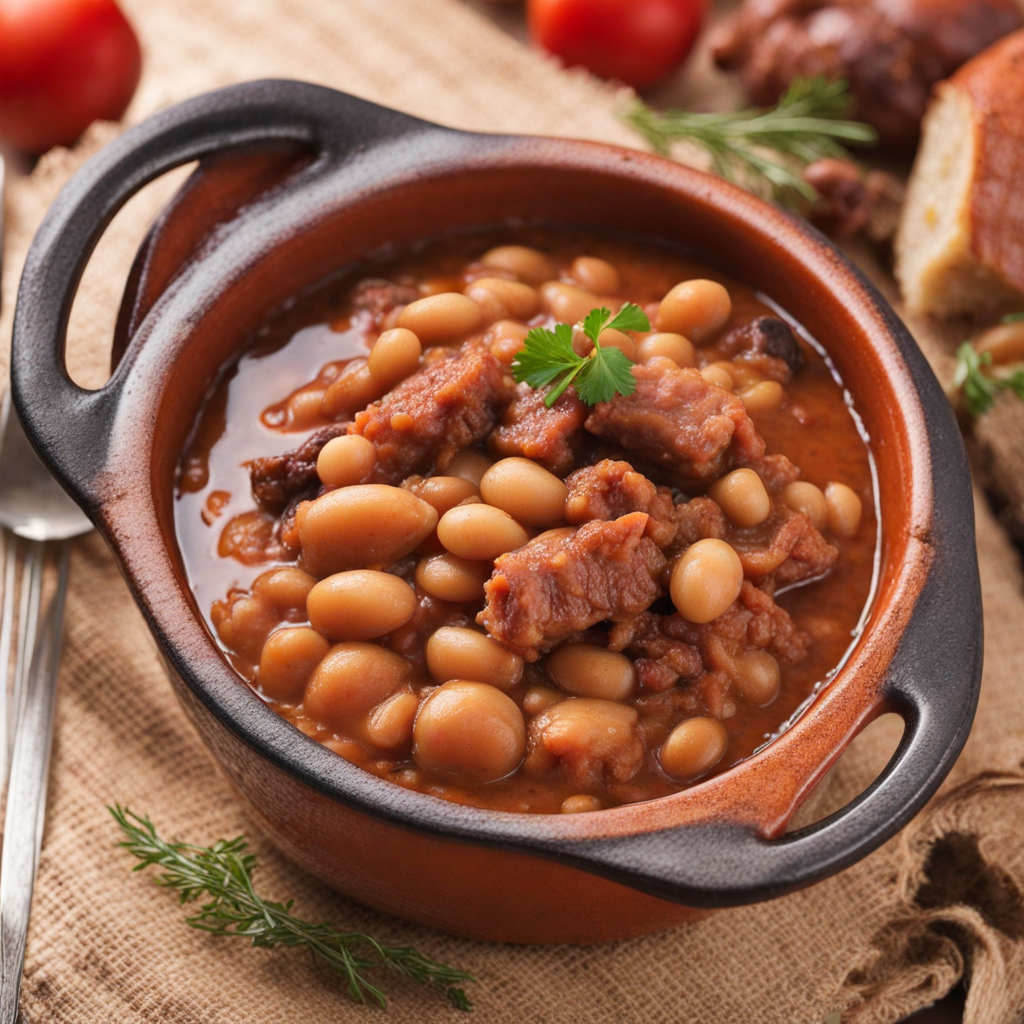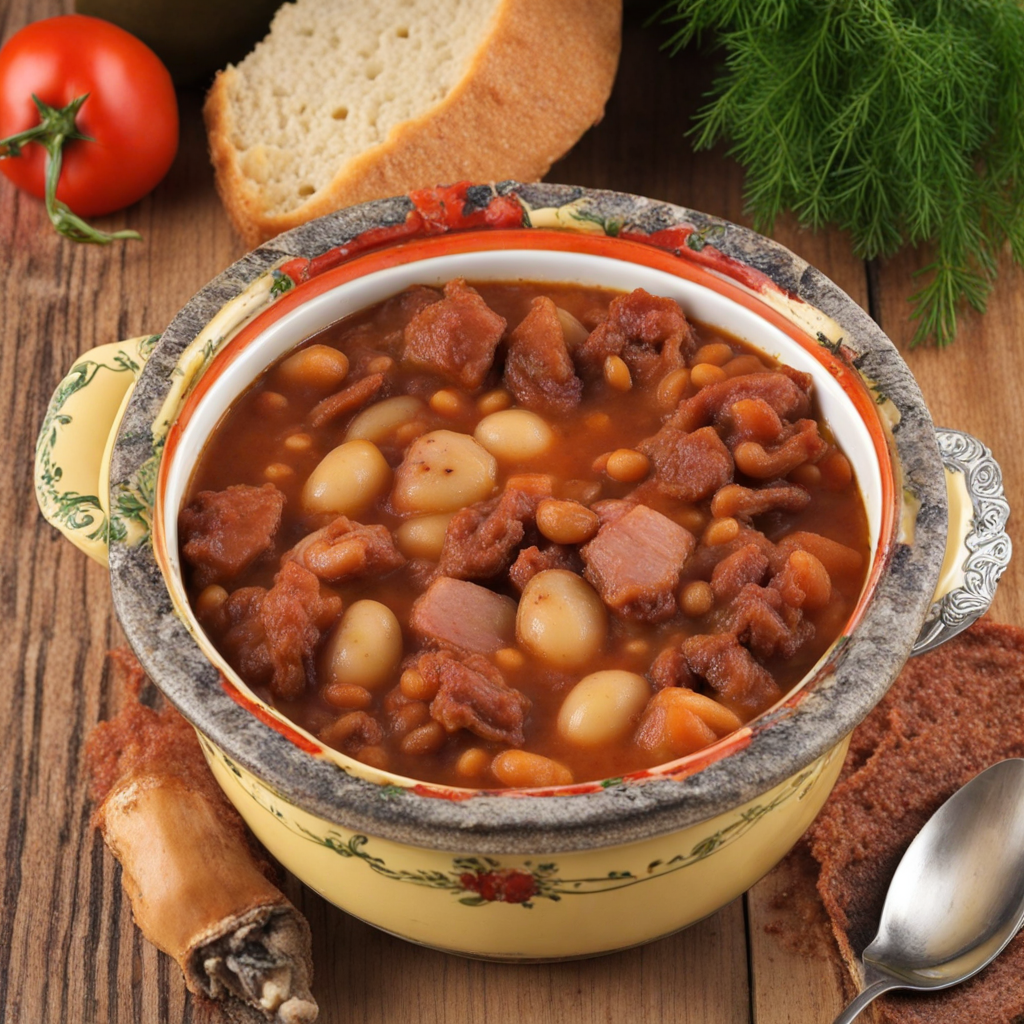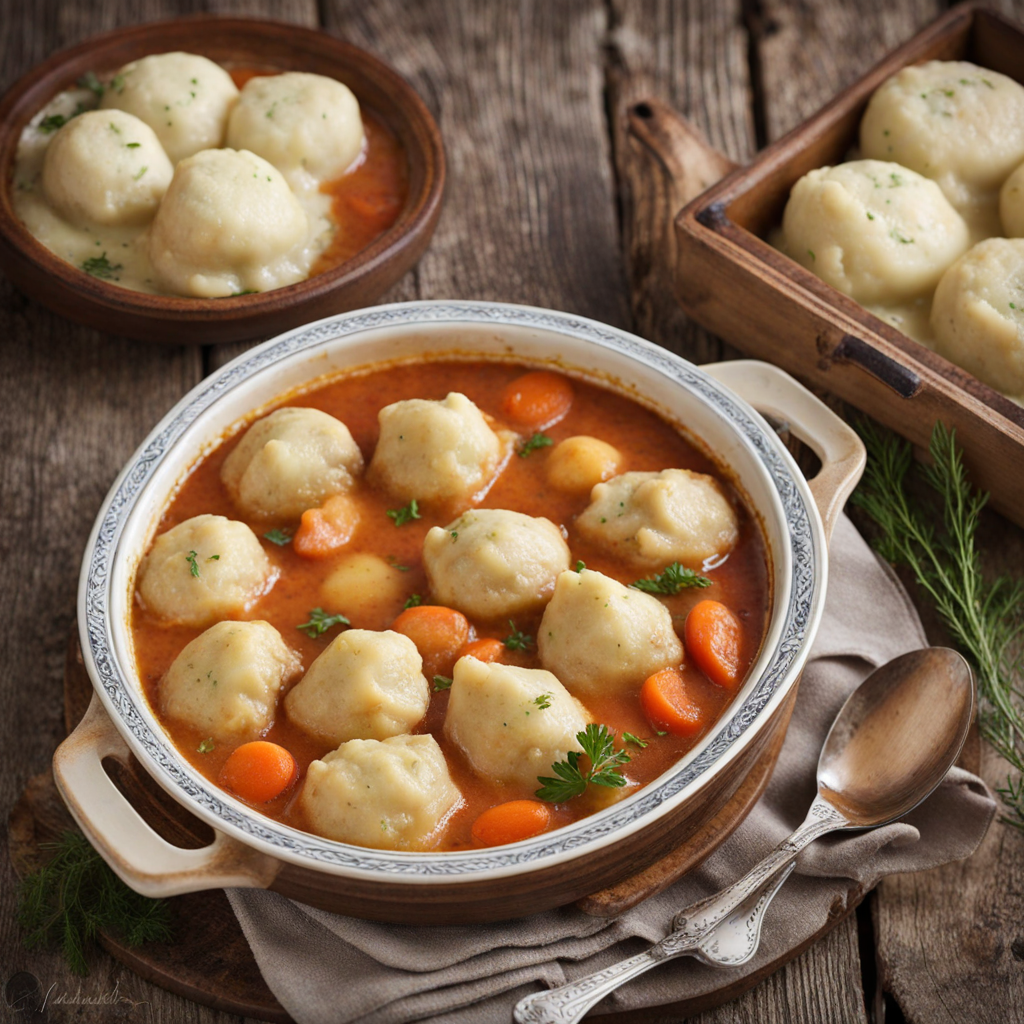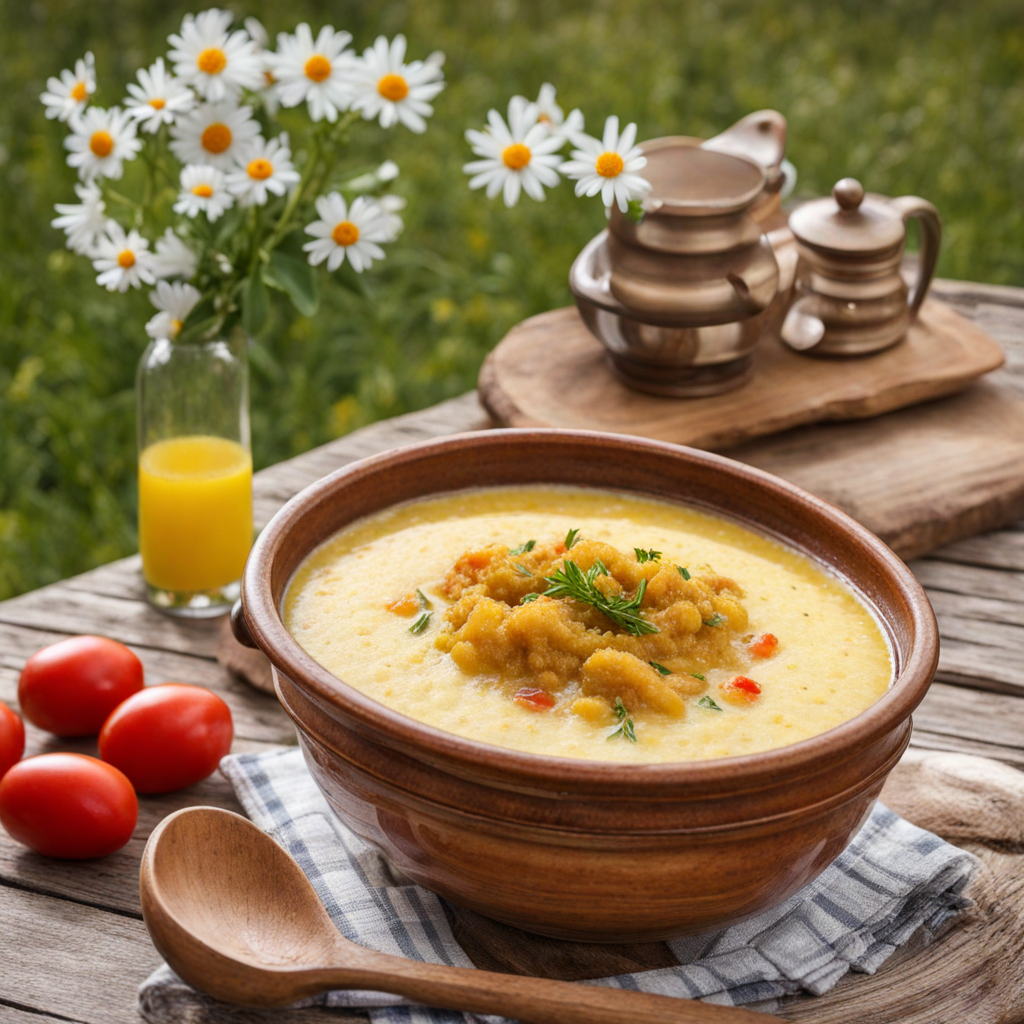Fasole cu ciolan
Fasole cu ciolan is a hearty and comforting dish that embodies the rustic flavors of Romanian cuisine. At its core, this dish consists of slow-cooked white beans, which are tender and creamy, providing a perfect base for the rich and smoky flavors of the meat. The star of the show is the ciolan, a piece of pork knuckle that is often braised until it reaches a melt-in-your-mouth tenderness. Seasoned with a blend of traditional spices, including thyme and bay leaves, the dish offers a warm and inviting aroma that fills the kitchen as it simmers. As the beans and ciolan cook together, they create a luscious broth that is both savory and slightly sweet, reflecting the natural sweetness of the beans enhanced by the richness of the pork. Commonly served with a sprinkle of fresh parsley and a side of pickles, fasole cu ciolan is a dish that balances flavors and textures beautifully. The contrast between the creamy beans and the succulent, smoky pork creates a delightful experience with each bite, inviting you to savor the depth of taste that comes from simple, high-quality ingredients. Traditionally enjoyed as a hearty meal especially during the colder months or festive occasions, fasole cu ciolan is more than just food; it’s a celebration of Romanian culture and hospitality. Often accompanied by a slice of crusty bread or polenta, this dish is perfect for sharing with family and friends. Each serving not only nourishes the body but also warms the soul, making it a beloved staple that truly represents the essence of Romanian home cooking.
How It Became This Dish
Fasole cu Ciolan: A Culinary Journey Through Romanian History Fasole cu ciolan, a hearty bean stew with smoked pork hock, is not just a beloved dish in Romania; it represents a rich tapestry of the country’s history, culture, and culinary evolution. To understand the significance of fasole cu ciolan, we must delve into its origins, cultural connotations, and the way it has developed over time. #### Origins of Fasole cu Ciolan The roots of fasole cu ciolan can be traced back to the agricultural practices of ancient civilizations in the region that is now Romania. The area has long been fertile land, conducive to farming, and beans have been cultivated for thousands of years. Archaeological findings suggest that various types of beans were consumed by the Dacians, the ancient inhabitants of the region. These early beans would have laid the groundwork for bean-based dishes that are still popular today. The introduction of pork into Romanian cuisine can be attributed to a variety of influences, including the migratory patterns of tribes and the agricultural practices of the area. With the arrival of the Slavs and later the Ottoman Turks, Romanian cuisine began to incorporate different meats and methods of preservation. Smoking meats became a common practice, allowing for longer shelf life and a distinct flavor profile. This preservation method was particularly useful in the harsh winters of the Carpathian Mountains, where fresh ingredients were scarce. Ciolan, or pork hock, symbolizes the traditional way of cooking meats in Romania, where the focus has always been on utilizing the whole animal. The combination of beans and ciolan speaks to a broader culinary philosophy of sustainability and resourcefulness. In peasant households, where food was often scarce, every part of the animal was used, and beans provided a rich source of protein. #### Cultural Significance Fasole cu ciolan is more than just a dish; it embodies the essence of Romanian hospitality and the communal aspect of dining. Traditionally, it is served during celebrations and gatherings, especially during the winter months. Its hearty nature makes it an ideal dish for cold weather, warming both body and soul. The dish is also deeply intertwined with Romanian folklore and traditions. It is often associated with the New Year’s celebrations, symbolizing prosperity and abundance for the year to come. In many regions, families prepare fasole cu ciolan as part of their New Year’s feast, believing that the dish will bring good fortune. This practice exemplifies how food can serve as a vessel for cultural beliefs and customs. Moreover, fasole cu ciolan reflects the spirit of Romanian cuisine, which is characterized by its simplicity, rusticity, and reliance on local ingredients. It is emblematic of the country's agrarian roots, where meals were prepared using seasonal produce and meats sourced from local farms. The dish showcases the importance of community and family, as it is often made in large quantities, allowing for sharing among friends and loved ones. #### Development Over Time Throughout its history, fasole cu ciolan has undergone various transformations, influenced by changing tastes, availability of ingredients, and culinary trends. In the early 20th century, the dish was primarily a staple for rural families, often made in large pots over open fires. As urbanization took hold, the dish began to find its way into restaurants and urban households. Chefs started to experiment with the recipe, adding their own unique twists while maintaining the core elements that made it beloved. In the post-Communist era, Romania experienced a culinary renaissance, with chefs looking to rediscover and elevate traditional Romanian dishes. Fasole cu ciolan was no exception. While it remained a comfort food for many, it began to gain recognition as a gourmet dish. Chefs started to focus on the quality of the ingredients, sourcing heirloom beans and artisanal smoked meats. This shift highlighted the importance of terroir and the connection between food and regional identity. Another significant development in the dish's history is the growing trend of health consciousness among consumers. With a rising interest in plant-based diets, some variations of fasole cu ciolan have emerged, replacing pork with smoked tofu or seitan. While these adaptations may not be traditional, they reflect a broader global trend towards sustainability and dietary inclusivity. #### Contemporary Enjoyment Today, fasole cu ciolan continues to be a staple in Romanian households and is frequently featured on restaurant menus across the country. Its preparation remains a communal activity, with families gathering to cook and enjoy the dish together. The traditional method of slow-cooking the beans and pork hock allows the flavors to meld beautifully, resulting in a comforting and satisfying meal. In recent years, food festivals celebrating Romanian cuisine have also embraced fasole cu ciolan, showcasing its cultural significance and promoting regional variations. Different regions of Romania often prepare the dish with their own local twists, adding unique spices or herbs that reflect the local palate. This diversity highlights the adaptability of the dish and its ability to resonate with different communities while remaining a unifying symbol of Romanian culture. #### Conclusion Fasole cu ciolan is more than just a dish; it is a reflection of Romania's historical journey, cultural identity, and social fabric. From its humble beginnings as a peasant meal to its status as a beloved national dish, fasole cu ciolan encapsulates the essence of Romanian hospitality and the importance of communal dining. As it continues to evolve within the landscape of modern cuisine, it remains a testament to the enduring power of food to connect people, celebrate traditions, and nourish the soul. Whether enjoyed in a bustling restaurant in Bucharest or at a family gathering in a rural village, fasole cu ciolan is a dish that brings warmth, comfort, and a sense of belonging to all who partake in it.
You may like
Discover local flavors from Romania







